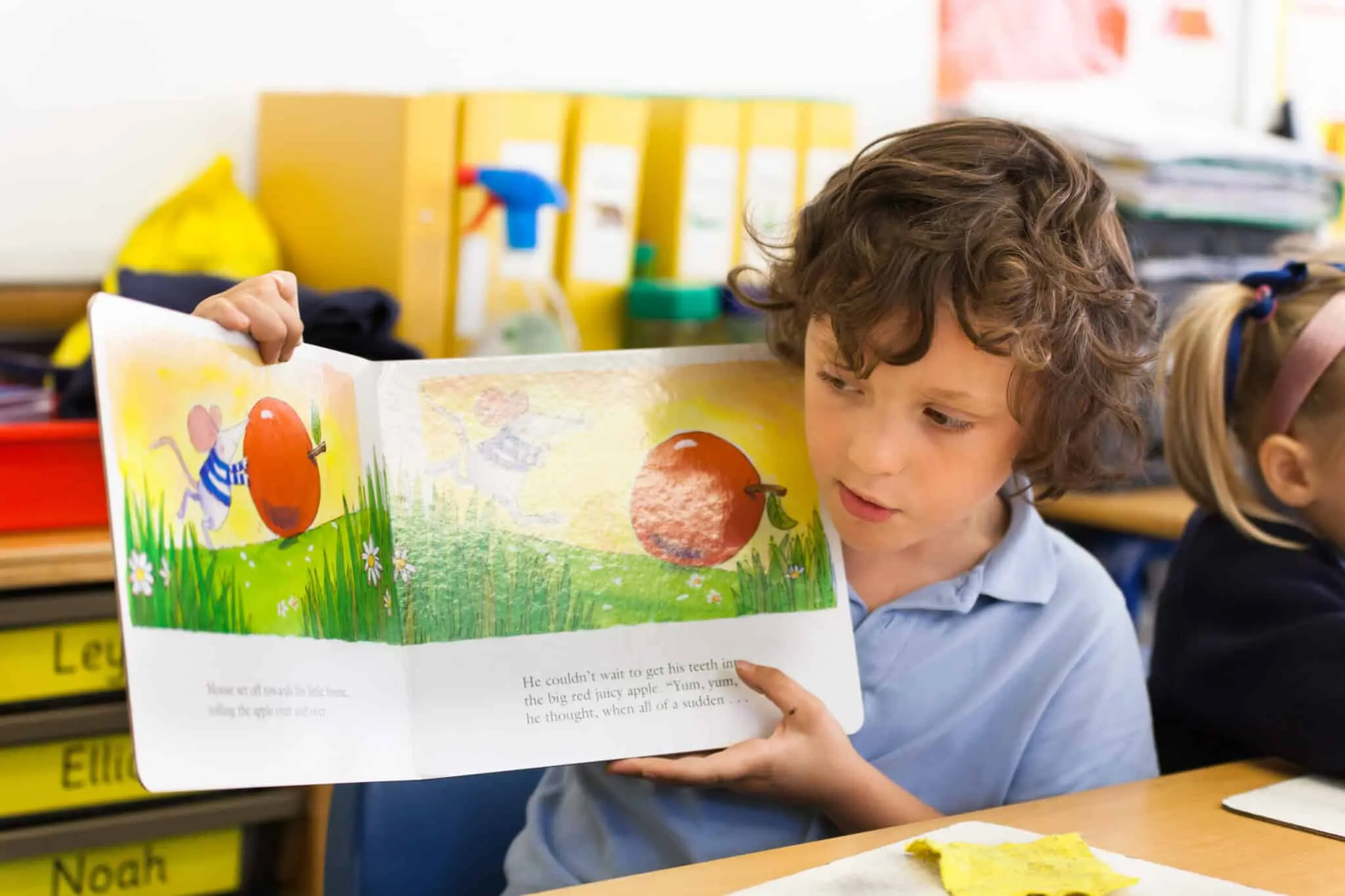June 4, 2021
To understand the impact of the pandemic on pupils’ education outcomes, the effective use of robust and reliable assessment data is vital. We’re proud of the key role Renaissance data has played in researching learning loss as a result of COVID-19, alongside the Education Policy Institute and the Department for Education (DfE).
Today we released the second part of the report series which builds on the findings released in the interim report ‘Pupils’ progress in the 2020 to 2021 academic year: interim report’ (February 2021). This interim report looked at the impact of the first national lockdown and the disruption to learning during the 2019/20 academic year, and what the effects were on children who returned to schools in September 2020. It found all year groups experienced a learning loss in reading. In primary schools this was typically between 1.7 and 2.0 months, and in year 8 and year 9, 1.6 and 2.0 months respectively. Pupils also showed learning loss in maths, with pupils in primary schools on average having experienced a learning loss of just over 3 months.
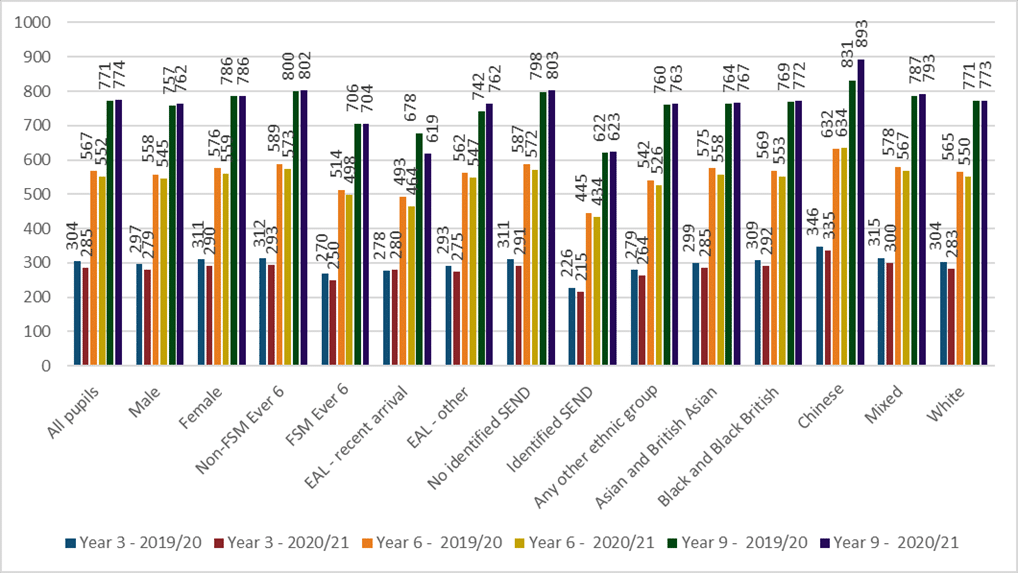
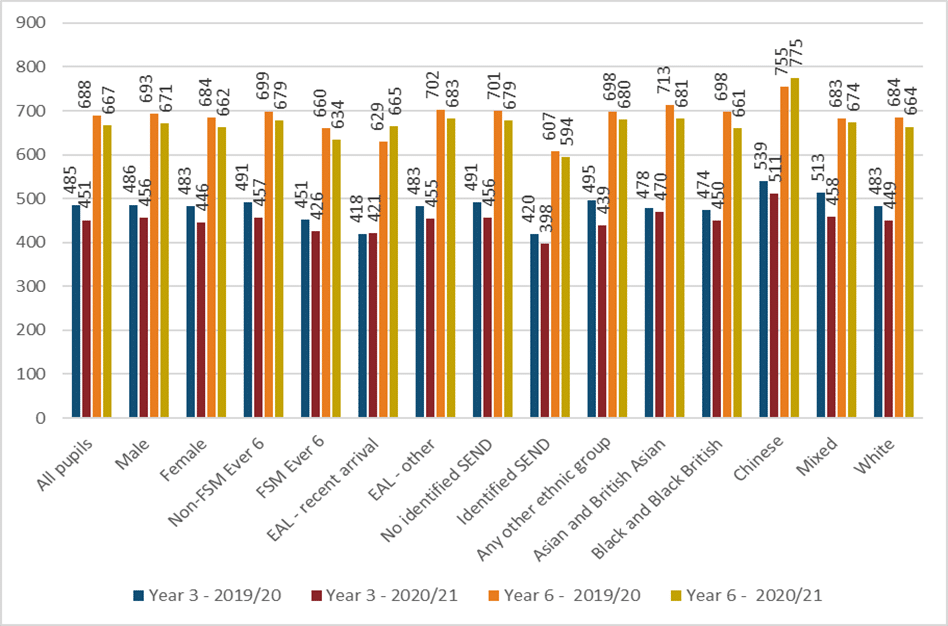
This second report builds a more in-depth picture of the impact of COVID-19 on learning among different groups of pupils, following pupil-level matching with the National Pupil Database. Furthermore, the second interim report in this series also assesses the extent to which any learning losses were recovered in the second half of the Autumn term (covering assessments from September until the end of December).
We are very pleased to also have released the initial findings from the spring term, in advance of full findings on the spring terms being published by the DfE later this year. The third report offers an initial assessment of whether pupils lost learning as a result of the early 2021 national lockdown at the beginning of 2021 (analysing assessments taken from January 2021 through to the Easter break). These initial findings currently cover primary year groups only (years 3-6) and further breakdowns by pupil characteristics and estimates for secondary will be published by the DfE later this year.
Key findings
Primary and secondary pupils experienced learning loss in the Autumn at about the same rate in literacy; but primary pupils suffered more in maths. As in the first report, we find that primary and secondary aged pupils appear to experience a learning loss in reading of a similar magnitude, of between 1.5 and 2 months. This is based on assessments undertaken during the Autumn term and compared to similar pupils taking assessments at the same time in prior years, showing where pupils might have been expected to be without disruptions to learning in 2019/20. Primary aged pupils experienced a much greater learning loss in maths than in reading – of over three and a half months. Due to limitations with the sample size, we were not able to provide robust estimates in maths for secondary pupils.
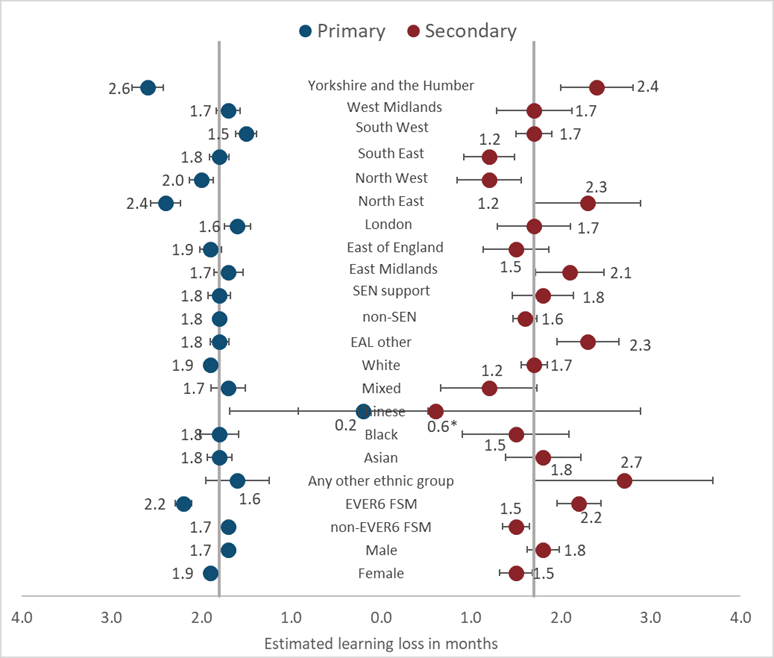
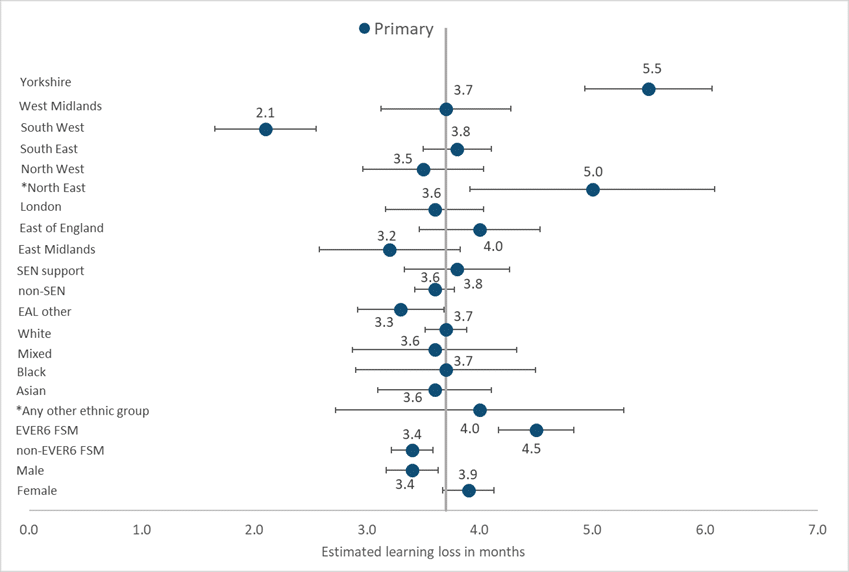
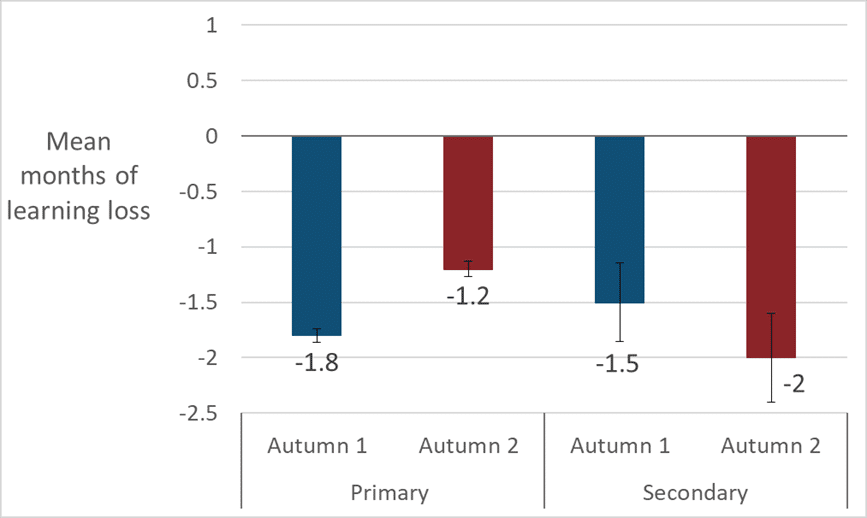
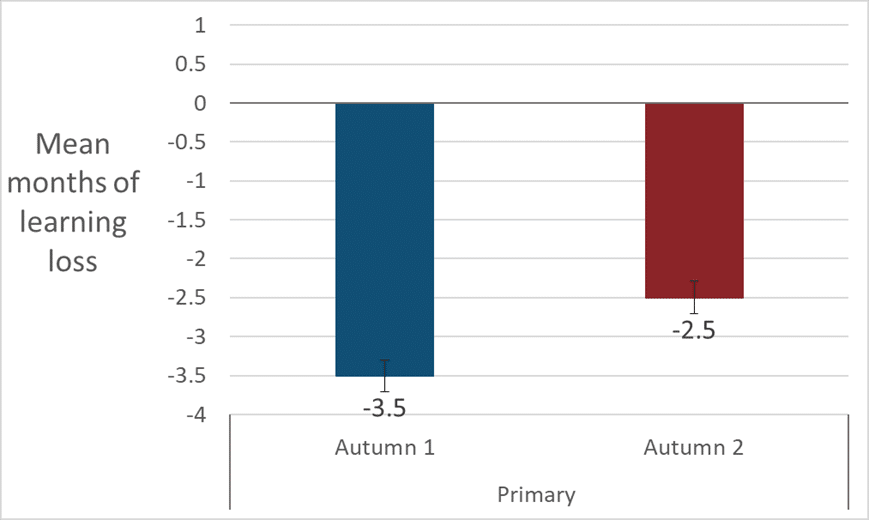
Restrictions to in-person teaching have led to a widening of the disadvantage gap. On average, pupils from disadvantaged backgrounds experienced approximately 2.2 months of learning loss in reading amongst both primary and secondary aged pupils, about half a month more than non-disadvantaged pupils. In maths, primary aged pupils from disadvantaged backgrounds had an estimated learning loss of 4.5 months, about a month more than their more affluent peers. To put this in context, this differential learning loss is equivalent to undoing a third of the progress made in the last decade on closing the gap in primary schools
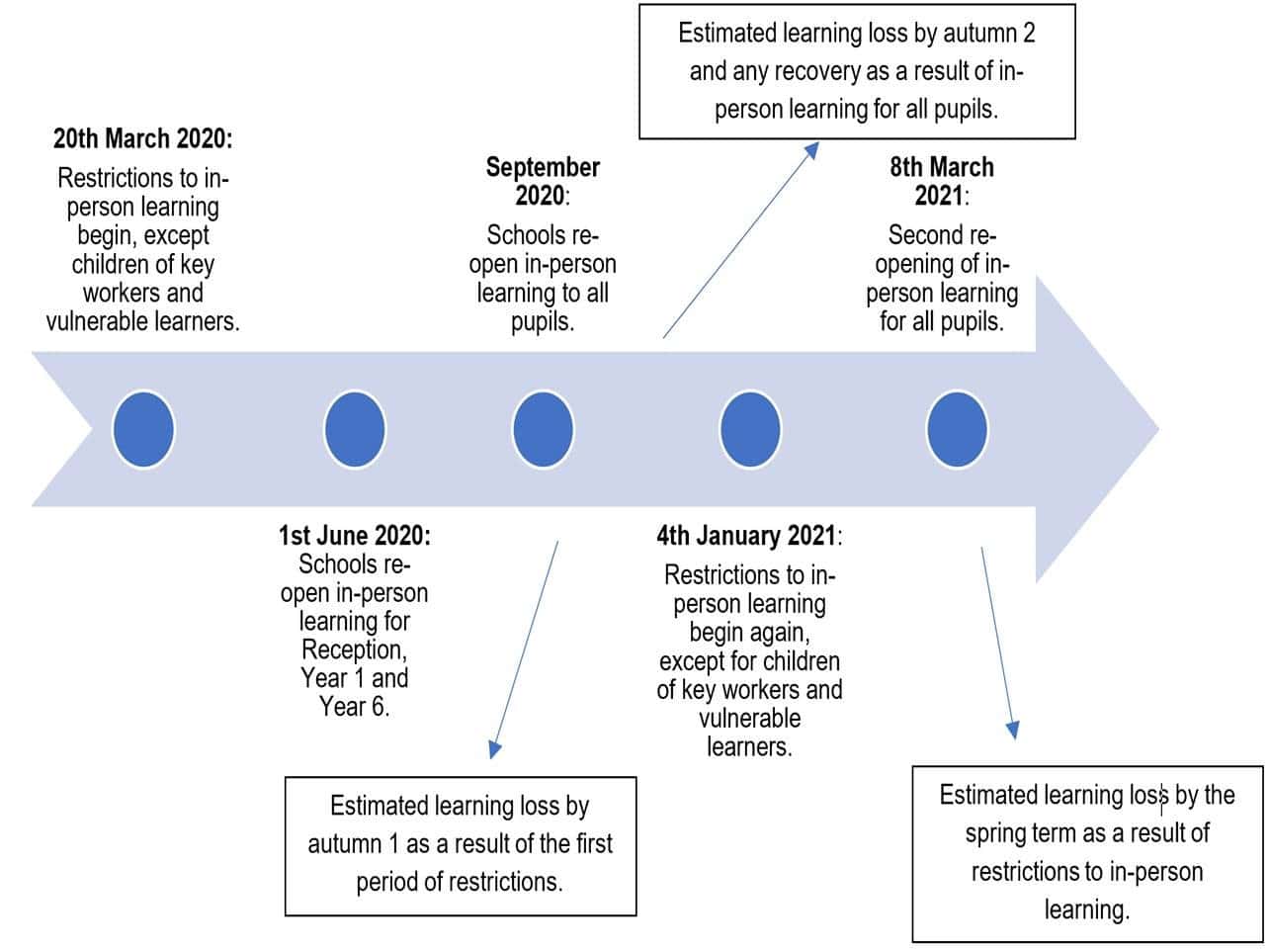
There are some other notable differences between certain groups and regions, which will also be contributing to a widening of the gap. Learners who have English as an Additional Language (EAL), pupils in Yorkshire and the Humber, and pupils in the North East, all experienced a learning loss of around half a month larger than other pupils.
There were some tentative signs of recovery at primary level in the second half of the Autumn term This report provides one of the first pieces of evidence that during the second half of the Autumn term, children began to recover some of the learning that was lost because of the first lockdown. The analysis suggests there was some recovery in primary schools in England in both reading and maths. However, when we look at secondary aged pupils, we find no statistically significant recovery.
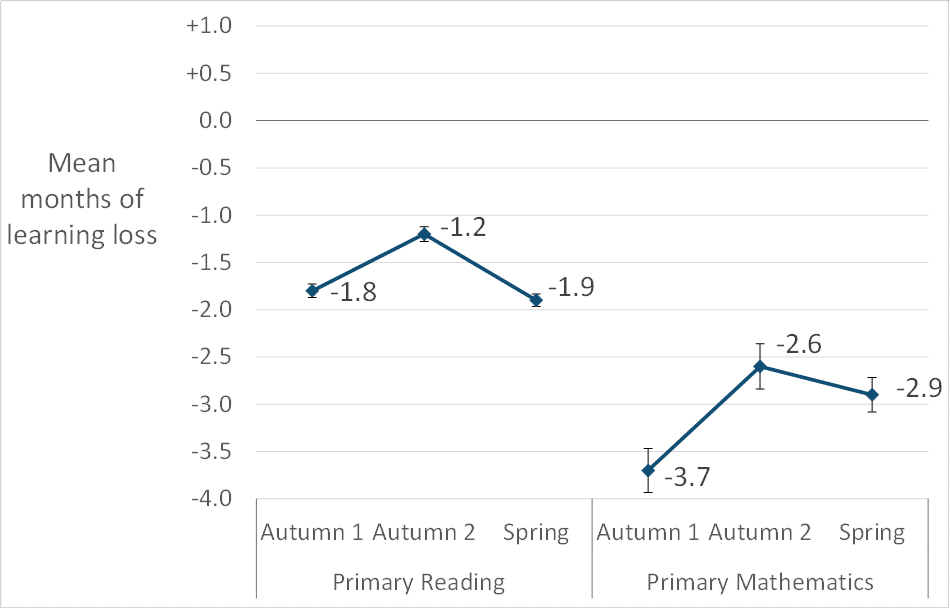
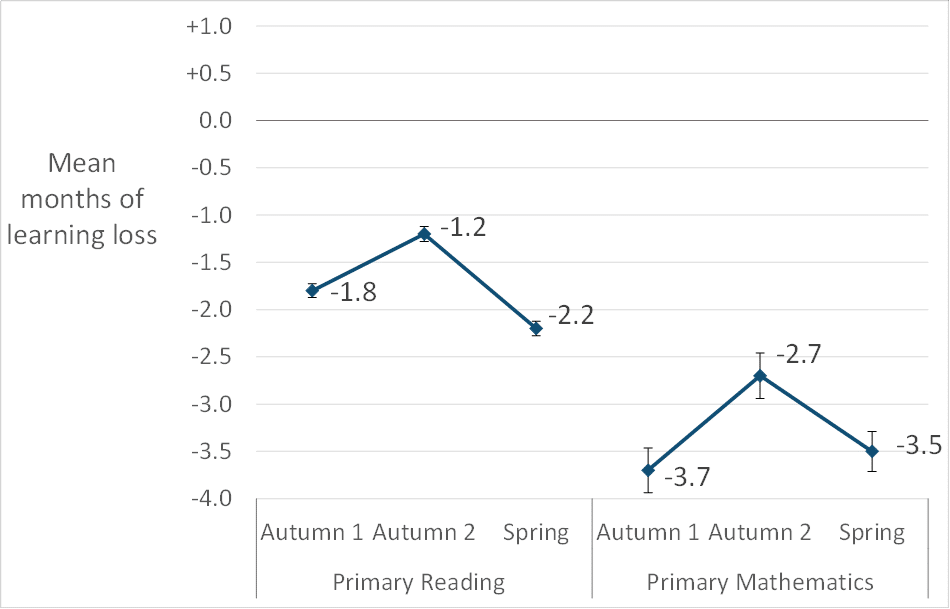
Primary pupils have also suffered from a second period of time out of the classroom at the beginning of 2021. Early findings from the Spring tests – taken after the early 2021 lockdown – show primary pupils were by then experiencing a learning loss of 2-2.3 months in reading and 3.1-3.6 months in maths. When compared with the learning loss estimates from Autumn, we see a further learning loss has occurred – an increase of 0.7-1 month in reading and 0.3-0.8 in maths. In other words, there is some evidence to suggest that learning losses are cumulative, and that tentative recovery seen in the second half of Autumn was then reversed again, and even compounded in reading.
What does this mean for policymakers?
This research could not be more topical – coming as it does just days after a welcome government multi billion pound commitment to addressing catch up and learning loss.
This research shows for the first time not just signs of learning loss in the aggregate, but how it is affecting different groups of students – by age, by wealth, and by region. Our research provides an underpinning assessment to set the scale of the problem, as well as identifying particular areas, such as maths, which ought to be at the top of policymakers risk radar.
What does this mean for teachers?
Data provides knowledge but the power comes when it is put in the hands of brilliant classroom teachers who can interpret the scores to best support students. To best support pupils make the most of the next academic year, planning and preparation for 2021/22 will be more important than ever. To inform that planning – a great first step will be to understand where each student is in the core skills of reading and numeracy when they step back into the classroom.
If you plan to use Star Assessments this coming September you are choosing a framework for monitoring reading and maths attainment when students start back at school post-Summer and across the school year. In this way, you can measure the progress and impact of classroom time and adapt according to each pupil’s measured performance. Importantly, choosing Star Assessments means you can also accurately track against national benchmarks.
Assessment tells you what your students know but learning progressions in reading and maths tell you what your students are ready to learn next. To support schools in this task, Renaissance is offering Focus Skills™ Workbooks to help teachers plan lessons that support pupils in learning the skills necessary for them to meet the curriculum requirements for their academic year group. These educational tools save teachers time and support them in creating tailored lesson plans, meaning pupils spend more time learning and are given more specific support for their developmental needs.
At Renaissance, we want to reduce teachers’ workload by providing simple technology that test, mark and analyse their pupils’ knowledge. With that information, they can then focus on what they are really there for – to educate pupils, guide their learning development and plan tailored programmes.
Focus Skills™ have been turned into teacher workbooks that are freely available to schools to provide a roadmap for closing learning gaps, and can be used to support individual, group or class instruction: Focus Skills
The full version of the report on the ‘Complete findings from the autumn term’ is available on GOV.UK here.
Full findings over the 2020/21 academic year will be published by the DfE later this year.
